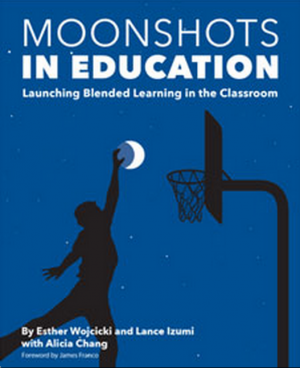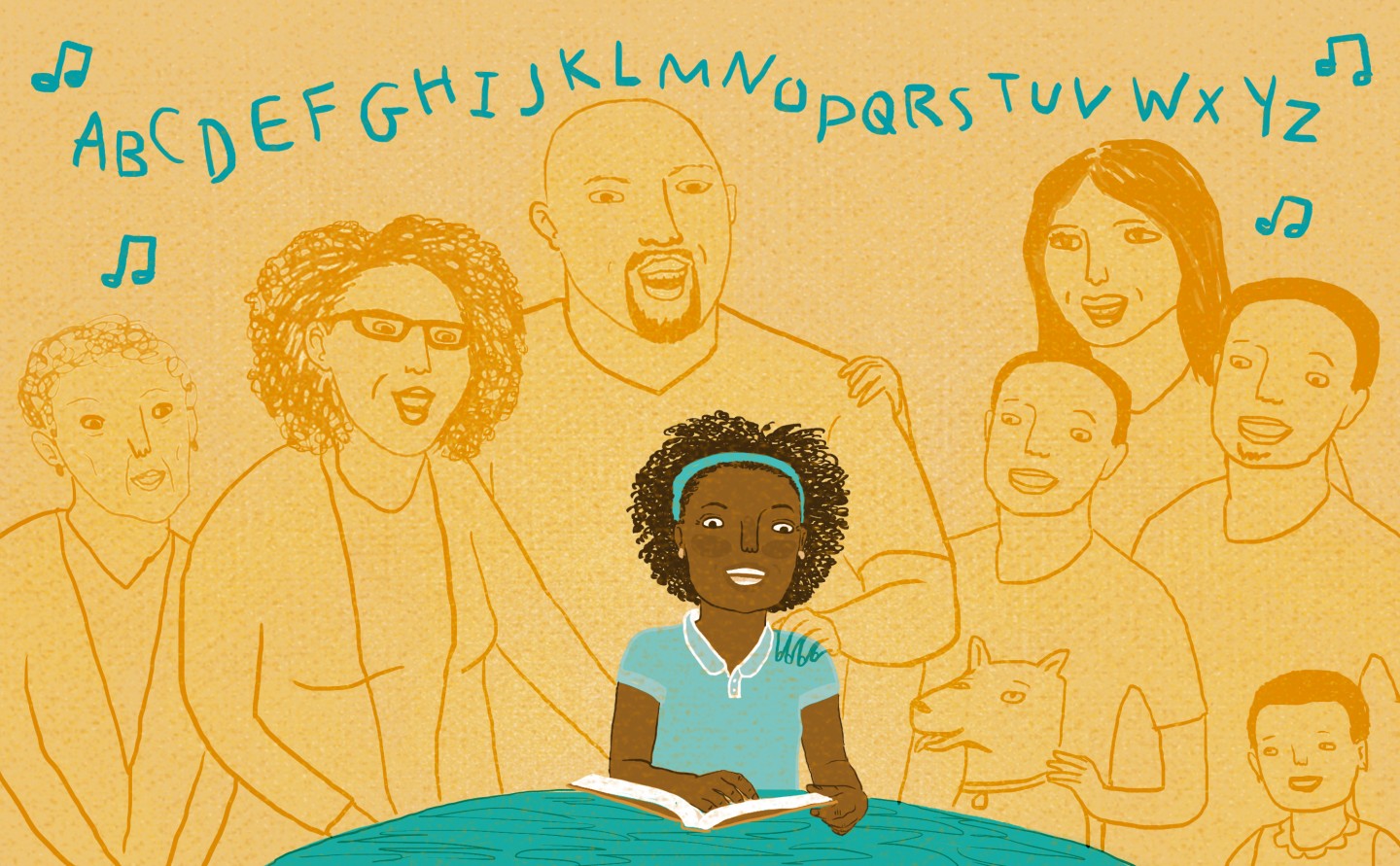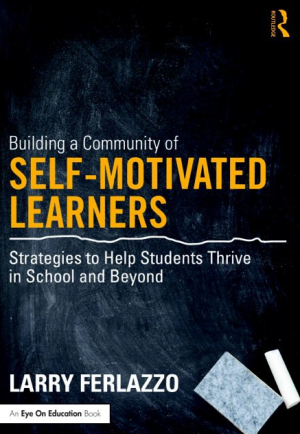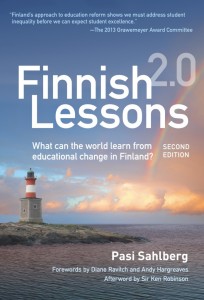Standards: Why Realizing the Full Promise of Education Requires a Fresh Approach
 Spyros Papaspyropoulos/Flickr
Spyros Papaspyropoulos/Flickr
This is the first of a two-part conversation with Yong Zhao about standards, testing and other core elements of the modern system of education, and the assumptions that may be standing in the way of meeting the real learning needs of all children. He is a professor in the college of education at the University of Oregon and author of Who’s Afraid of the Big Bad Dragon: Why China Has the Best (and Worst) Education System in the World and World Class Learners: Educating Creative and Entrepreneurial Students.
Education is not “omnipotent,” says Yong Zhao, education professor at the University of Oregon, but it can change the trajectory of people’s lives. Most recent education policies, such as No Child Left Behind and Common Core, have sought to better realize this potential by aiming for parity in outcomes, as indicated by standardized test scores. Proponents, including many civil rights groups, see such initiatives as a way to shine a light on inequality in education and pressure schools to help disadvantaged students graduate with the same knowledge and skills as their more advantaged peers, with the goal of better preparing them for colleges and careers.
Zhao says he embraces the underlying goal—to even the playing field for all children—but notes that inequities have been apparent for a long time. Furthermore, he believes that serving the best interest of all students requires a very different approach that starts with a paradigm shift in how we view education. Attempts to standardize individual student outcomes are an unhelpful, if not downright harmful, way to promote the development of human beings, he says. Instead, “we need to start with the individual child, instead of what others think [that child] should become.”
After researching different educational approaches over the years (his findings aresummarized in several books) Zhao has concluded that the most fruitful form of education—and the one with the best chance of empowering children to overcome poverty and other disadvantages—offers each child the opportunity to pursue his or her own goals, in a stimulating and supportive environment. Unfortunately, low-income students are least likely to have any of these elements in their schools. It’s this “opportunity gap,” rather than any “achievement gap,” that characterizes unequal education and is fully within the power of schools (and their funders) to remedy, Zhao says.
In the alternate vision, individual differences are not flaws to be fixed; the emphasis instead is on helping all students to identify and develop their areas of interest, and to build on their strengths. Standards, curricula and tests would play a very minor role, as tools to be deployed only when they can help a particular student to progress. Learning would be organized around individuals, instead of classes and grades. And rather than looking to schools and teachers to manage students’ learning, we should “give children autonomy, trust that they want to learn, and let them become owners of their learning enterprise.”
This also means redefining excellence to focus on how well educators support individual pursuits. “Look at what children are interested in or can do, and plan education with that in mind, rather than trying to fix them,” Zhao writes in his book, “Who’s Afraid of the Big Bad Dragon: Why China Has the Best (and Worst) Education System in the World.” “Expect everyone to be great, and start educating from that angle, and things can be very different.”
Whose Standards, and to What End?
Academic standards—whether part of Common Core or not—are subjective, Zhao says, and don’t account for the fact that children naturally develop at different rates, or that learning is more haphazard than linear. He also doesn’t buy the argument that they benefit disadvantaged children by setting a high bar. “Being able to pass a prescribed test is not a high expectation,” Zhao says. “To become exceptional in an area that you want to pursue—that is a high expectation, and it is about having dreams. By imposing standards, we are not elevating expectations, but perhaps driving down expectations, especially for poor communities. … We are depriving them of the chance to dream.”
Even worse, standards can “cause psychological damage to those not judged as good,” Zhao says. This can set off a vicious cycle, creating feelings of low self-efficacy and disengagement that undermine further learning, because “few people want to stick to a place where they are constantly told that they are not good.” A system based on punitive consequences for not meeting expectations can also backfire: If it gets children decoding letters or adding numbers sooner rather than later, but diminishes their interest in reading and leads them to hate math, Zhao asks, “is it worth it?”
Last but not least, “standards describe the past, not the future,” and reflect the notion that children must “fit into the world as it is,” he says. “We forget that our children are the creators and owners of the future.”
That said, certain types of standards (used with caveats) can be helpful in two ways, Zhao says. They can guide learners, by suggesting a sequence to follow, and describing the knowledge and skills needed in a given field. Such information is dynamic, subjective and personal—those interested in becoming mathematicians might benefit from different math standards than their otherwise inclined peers, for instance. Each individual should therefore be free to decide which standard he or she wants to pursue, whether that means using an established math program such as Singapore math, or the Common Core standards, or developing their own set of standards, Zhao says.
The other useful application of standards is broader, but it is for schools rather than learners, Zhao says: Standards can be developed to define the educational opportunities schools should provide to all students.
Does a Mandated Curriculum Help or Hinder Learning?
Standards (and their associated tests) often drive the design of a curriculum. Placing a lot of weight on test scores in a few subjects has led to “curriculum narrowing,” especially in schools that are under pressure to boost their aggregate scores or else lose funding or face closure. These are usually schools serving low-income students, meaning that “disadvantaged children experience a much less rich education than their advantaged counterparts,” Zhao says, and are therefore less likely to feel a connection to what they’re learning or to view it as relevant to their lives.
But there’s an even deeper problem, he adds: Any set curriculum is counterproductive and also discriminatory, along a dimension that affects people of all incomes and races.
It is counterproductive because the notion that following a set curriculum will make students “college and career ready” is misguided, he says. Not only is college acceptance “an artificial goal, as if life ends at college,” but there are many types of colleges and majors, requiring different sets of knowledge and skills. That is even more true of careers, especially in a rapidly changing world in which many professions will soon become obsolete and others have yet to be invented. “It is very difficult, if not impossible, to predict which course of study will give one a better chance of employment,” Zhao says. “If you want to be ready for a career, you’d better be the one to create that career yourself.” The best preparation for that, he adds, is for students to develop an entrepreneurial mindset and chart their own educational paths.
The second issue is that schools that are only oriented toward strengthening students in certain academic areas are imposing subjective and narrow definitions of success on all students and effectively discriminating against those whose interests and strengths lie in other areas, such as music, art, sports and crafts, Zhao says.
Even the basics—the knowledge that everyone needs in order to function in our society—don’t justify a mandated curriculum, he contends. A broad, flexible curriculum that supports children’s individual interests and strengths is more likely to engage them and promote learning, so that truly essential knowledge becomes “difficult to escape—when individuals want to pursue anything, they must learn the basics, so the basics are sought after, instead of imposed.”
A Different Mindset
What all this adds up to is a need to “re-imagine education,” Zhao says. His ideal educational environment (detailed here) would combine the essential elements of democratic schools and certain types of project-based learning programs. This can be accomplished even on modest budgets, he notes; what matters more is mindset.
He recommends questioning all basic assumptions. For example: “Is the teacher the only instructor, or can students help? How about using resources beyond the school, like the community or parents?” (A recent article shows how one school is leveraging such resources.) Technology can also expand access to resources within the wider community.
Another thing to bear in mind, Zhao says, is that schools that provide a learning environment that supports individual needs benefit greatly from harnessing their students’ intrinsic motivation, because they don’t have to work hard to try to overcome resistance to learning. All human beings are born with the capacity and desire to learn, he says, but their environment can either suppress or encourage that drive. “If people are driven by their own goals, that are meaningful to them, and feel a sense of accomplishment and self efficacy, then they really want to learn.”
By




















